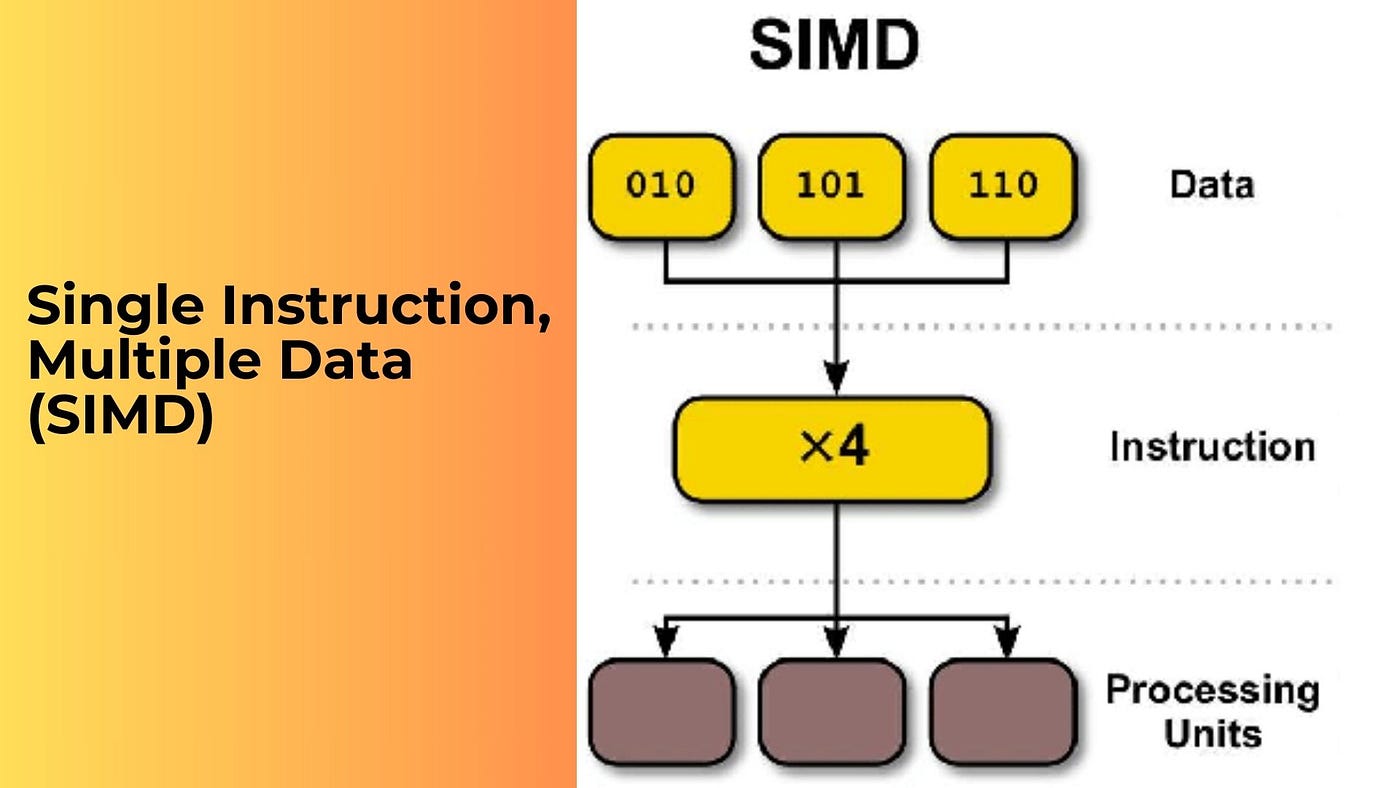Week 8A - SIMD
 Hamza Teli
Hamza Teli
Welcome again everyone! In this article I will be going over a new topic for many of us. This article will go over “SIMD”. I will attempt to explain it in simple terms. Lets get started!
What is SIMD?
SIMD stands for Single Instruction Multiple Data. In simple terms, you have one operation and multiple values are processed simultaneously. This is good because it drastically increases efficiency of our workloads.
Brief overview on computers
Now before going into how SIMD works, lets briefly go over how computers work. This will be a quick recap of one of my first articles. Computers run on essentially two values 0s and 1s. This is called binary and all it represents is the absence or presence of electricity flowing through it.
1 means electricity flowing
0 means electricity is not flowing
Isn’t it fascinating that the millions/billions of operations a computer performs comes down to this? Now the question is how can these chips use electricity to perform this process. According to Professor Chris Tyler, for the first generations of computer chips, they used a technique called Rubylith. Rubylith is a film that is manually cut to design the layout of the computer chip. This film is later used to create the actual chip.
However, nowadays they don’t use Rubylith anymore, its code. Verilog is a specialized programming language that simulates circuits (Source). Later on the code gets translated into a chip layout and then they use this to develop the chip (pretty cool).
Speed of a chip
When it comes to the performance/speed of a chip, we have all heard of clock speed. You know when we are looking at modern computers at BestBuy, we look at the processor and see 3.4 GHz and we think nice. For those of you that don’t know the clock speed determines how many operations are performed per second. So the higher the clock speed the better. You may be thinking why not just crank it even higher? The issue with that is this means it uses more electricity which means more heat. And the issue with too much heat is that it can lead to the chip melting without proper cooling. So then how do we deal with this issue? This is where SIMD comes handy.
SIMD: A new approach
In SIMD, we are doing the same operation on multiple data at once. This is done with vector registries that exist inside the processor and are larger than regular registers. These registers are listed below
V0.2D → 64-bit values
V0.4S → 32-bit values
V0.8H → 16-bit values
V0.16B → 8-bit
If you have an array and you need to add values, if it uses lets say 0.4S that means 4 additions are adding at the same time.
Sounds cool right? But the limitation is that this doesn’t work for single values reads. If a value comes in one at a time, SIMD can’t do much here. Likewise, if you use one value that dictates the next value it wont be effective here.
SIMD: Real Life Example
According to Professor Chris Tyler’s lecture, SIMD is also used when we are watching a video or a movie. Each frame of a video or movie can have millions of pixels, and this is where SIMD comes into play. SIMD can handle many pixels at once increasing efficiency. So lets say we wanted to use this same SIMD process? We can write code that takes advantage of SIMD and there are 3 main ways:
Autovectorization → The compiler will automatically find places to use SIMD by maybe looking at loops that are processing arrays. If it finds that the array can benefit from SIMD, it does it automatically. Note: if you have some complex code, the compiler might not be able to determine if SIMD can work there.
Inline assembler → This is where we put assembler into our code.
Compiler intrinsics → Intrinsics are extensions to C language that look like functions, we can use this in our code instead of using assembler in our code.
References
Credit goes to Professor Chris Tyler for the content I discussed above. Please visit the following link for more information (Click here)
Cover Image credit goes to Afzal Badshah (https://miro.medium.com/v2/resize:fit:1400/1*snfcXXYpTPLLIjNYrk2rTg.jpeg)
Subscribe to my newsletter
Read articles from Hamza Teli directly inside your inbox. Subscribe to the newsletter, and don't miss out.
Written by
